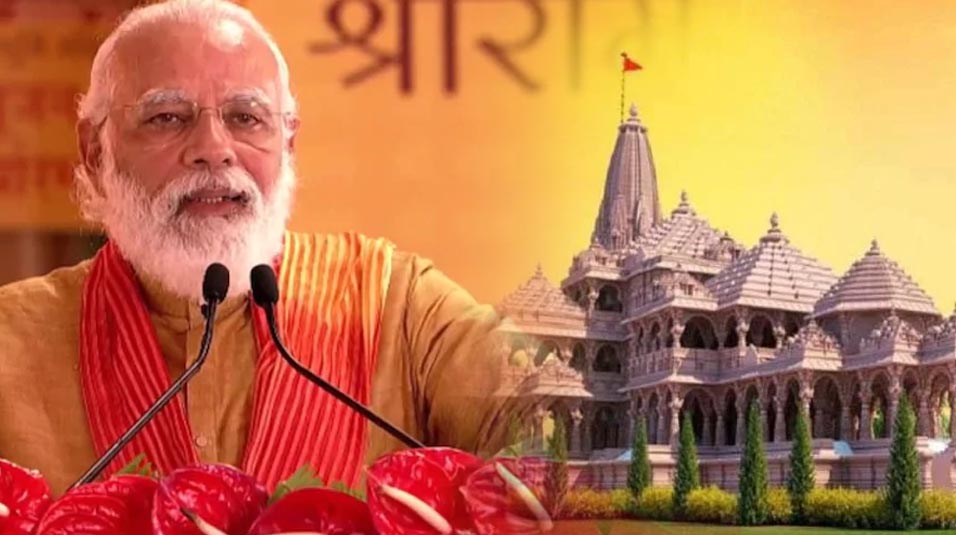The wait of centuries ended today. The entire world is chanting “Jai Shree Ram”. Donned with a new look, Ayodhya is all set to start a new chapter in its long history. Prime Minister Narendra Modi laid the foundation stone for a grand temple at Ayodhya following a Bhoomi Pujan ceremony.
Ayodhya is believed to be the birthplace of Lord Ram (Ramjanmabhoomi) in Uttar Pradesh’s Ayodhya. A glittering ceremony was held at the launch of the temple’s construction on Wednesday, August 5, 2020. After the ceremony of laying the foundation the symbolic construction of the temple will begin.
Security was very tight during the event, particularly due to the ongoing coronavirus pandemic and the need to adhere to social distancing. Only 175 guests have been invited including 135 saints. But the temple trust has ordered 100,000 packets of laddus for distribution.
PM Modi is the first prime minister to visit the Ram Janambhoomi and offer prayers. While the ceremony was attended by dignitaries including Uttar Pradesh chief minister Yogi Adityanath, Governor Anandiben Patel, RSS chief Mohan Bhagwat and Ramjanmabhoomi Teertha Kshetra Trust Chief Nritya Gopal Das.
After landing in Ayodhya from Lucknow, PM Modi first offered prayers at Hanuman Garhi temple and headed straight to the temple for the ceremony. PM Modi expressed gratitude to all the people who had made huge sacrifices for the temple moment. “A grand temple will now be built for our Ram Lalla who had been staying in a tent for decades,” he said.
Silver bricks were used during the rituals. The soil from nearly 2,000 holy sites from all across the country and water from around 100 rivers, including Ganga and Yamuna, was used in the ‘Bhoomi Puja’.
The bricks donated by devotees from across the world in 1989 will be used as a foundation stone. Out of many, 100 bricks with ‘Jai Shri Ram’ engraved on them will be used.
The Ram Temple will be built according to the Nagar style of architecture with a relatively smaller entrance and bigger abode. The shrine to be constructed in Ayodhya will be 161 feet tall, which was earlier 141 feet (20 feet taller) as mentioned in the original design prepared in 1988. The Ram Temple in Ayodhya has been designed uniquely in a way that it will be able to withstand an earthquake of magnitude 10 and will have a life span of 1,000 years.
The sandstones for the construction of Ram Temple have been brought from Rajasthan, these are the same sandstones which were also used earlier in building the Akshardham temple of Delhi. It is considered as the best quality of stone in its category.
The deity worshipped here since 1949 has been situated at the sanctum sanctorum, escalating the row over a piece of land on which Babri Masjid had been built in the 16th century. It is believed that Babri Masjid was built over the Ram mandir and was later demolished.
The temple construction has been made possible after the decade long legal battle which ended because of a Supreme Court verdict nine months ago. The verdict announced the site to be awarded to the Hindus. The Muslim community has been given a 5-acre plot at another location to build a new mosque to make up for the 500-year-old Babri Masjid demolished by a mob in 1992.



